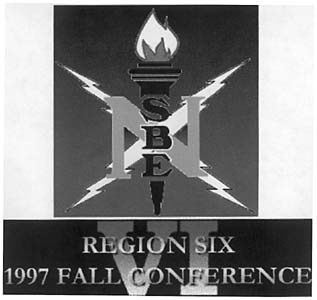Laptop over Hip-Hop
The African American pocket-protector crowd upgrades to the next generation
By J. Douglas Allen-Taylor
Several hundred African American youth spent a couple of days in Silicon Valley over the weekend. No baggy jeans or backward baseball caps in sight. This was a shirt-and-tie and tailored suit-crowd, with attaché cases and the occasional laptop instead of the stereotypical basketball and boombox. If any of them were observed hanging out in some dark San Jose alleyways, they were probably on some workshop project, pulling out schematics and arguing over the best ways to work around the power grid to bring brighter lights to the city's neighborhoods.
These were engineering students attending the Region VI Conference of the National Society of Black Engineers, which was split between the campuses of San Jose State and Santa Clara universities.
Conference workshops were predictably obfuscatory for the uninitiated. At the MMX Programming workshop, Jahi Ajamu Awakoaiye, a dreadlocked senior performance engineer from Intel who looked hardly older than the student attendees he was teaching, went through a brisk slide show presentation that included references to algorythm evaluation, 32- and 64-bit registers, source code, data overflow and some jotted-down notations that looked disturbingly like Egyptian hieroglyphics.
I felt more at home at the Dynamic HTML workshop run by Damon Jones of Hewlett-Packard. The session was held at Santa Clara's computer lab so that everyone could network on their own individual monitor. True to real life, the network program never did operate properly, so the workshop ended up being more of an exercise in how to solve that problem, with students fiddling around the keyboards for a while, and everyone finally huddling around the monitor of the one participant who figured out how to get it right.
Jones was also the creator of the muscled-up Web site for the Region VI Conference. It was full of Java applets and sound and movie modules that must have looked great at the big ISDN-line computers at Hewlett-Packard, but which pretty much blew out the brain of my little Performa 6116CD at home. Jones confessed, a little sheepishly, that he couldn't hear the Website's soundbytes on his own home computer.
Other workshops at the conference included sessions on Biomedical Engineering and Solar Energy Development in Rural Africa, as well as the more personal areas of Managing Stress In & Out of School and assessing the Battle for Affirmative Action. All was not serious work, however. Someone with a good handle on the sensibilities of African American students included a couple of break periods where cards and dominoes were made available, and set up a Congolese dance session at Shapell Lounge at Santa Clara, where participants shed their ties and shoes and traded sweat to a fierce African drumbeat.
"I hope these young people have already been to the job fair," laughed a career development counselor from Chico State, who couldn't resist the urge to join in the rhythm. "Some of them are decidedly funky."
The Career Fair at Santa Clara's Leavy Activity Center was one of the highlights of the conference, with participants putting in their bids for after-graduation positions at such companies as Synopsys, Hughes Space & Communications, Lockheed Martin and Netscape. Recruiters from Symantec and Sun Microsystems said this was the first NSBE conferences they'd been to, but they planned to come to more. A PacBell spokesperson, on the other hand, said the phone company has been following the NSBE circuit for years. They expected to hire two to three people they met at the weekend conference and hired six others at the last NSBE national conference, with starting salaries in the $32,000 to $50,000 range.
An undergraduate student in mechanical engineering at Santa Clara, Myers was one of the few conference participants in jeans and a T-shirt. Bright and confident, she seemed more problem-solver than parliamentarian, spending much of her time rearranging scheduling matters and tracking down lost workshop facilitators on a cellular phone.
"That's what engineers do, solve problems," she said. "Scientists develop theories about the way the world works. It's the job of scientists to put those theories to work, building something, doing something."
Maybe when she's finished designing the bridge at the Southern Crossing or completed plans for the new San Jose airport, Myers or one of her friends can help me squeeze some more memory into my Mac and keep it from bombing. Now that would be a challenge.
[ Metro | Metroactive Central | Archives ]
Copyright © Metro Publishing Inc. Maintained by Boulevards New Media.

From the Nov. 6-12, 1997 issue of Metro.
![[Metroactive Features]](http://metroactive.com/features/gifs/feat468.gif)